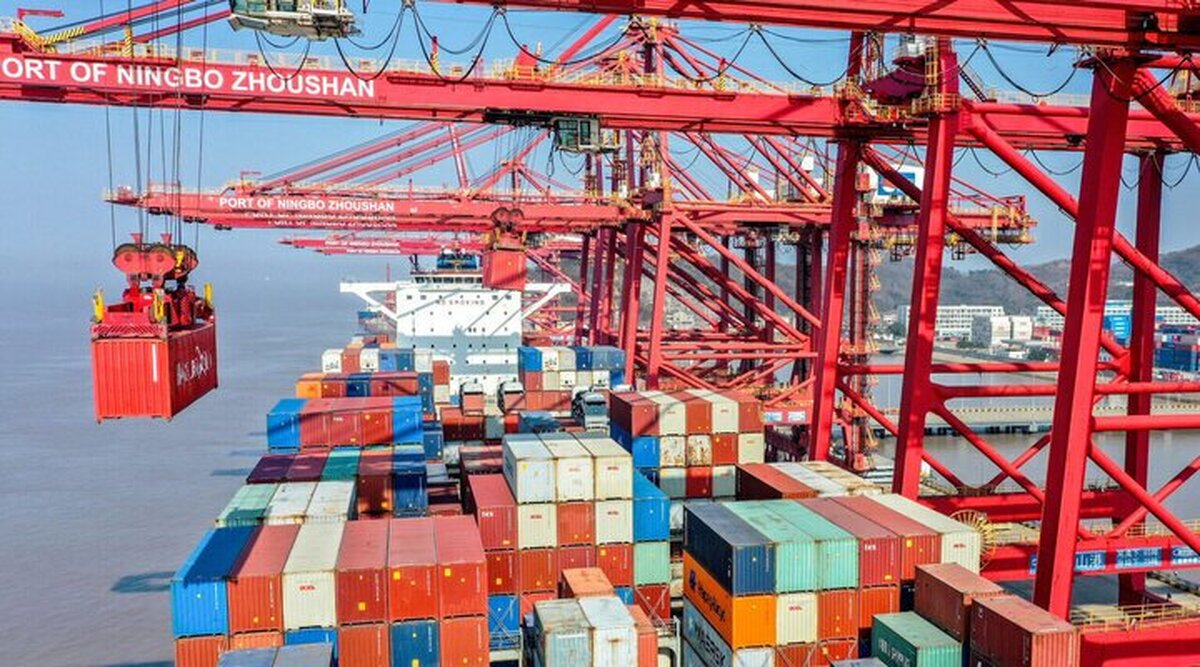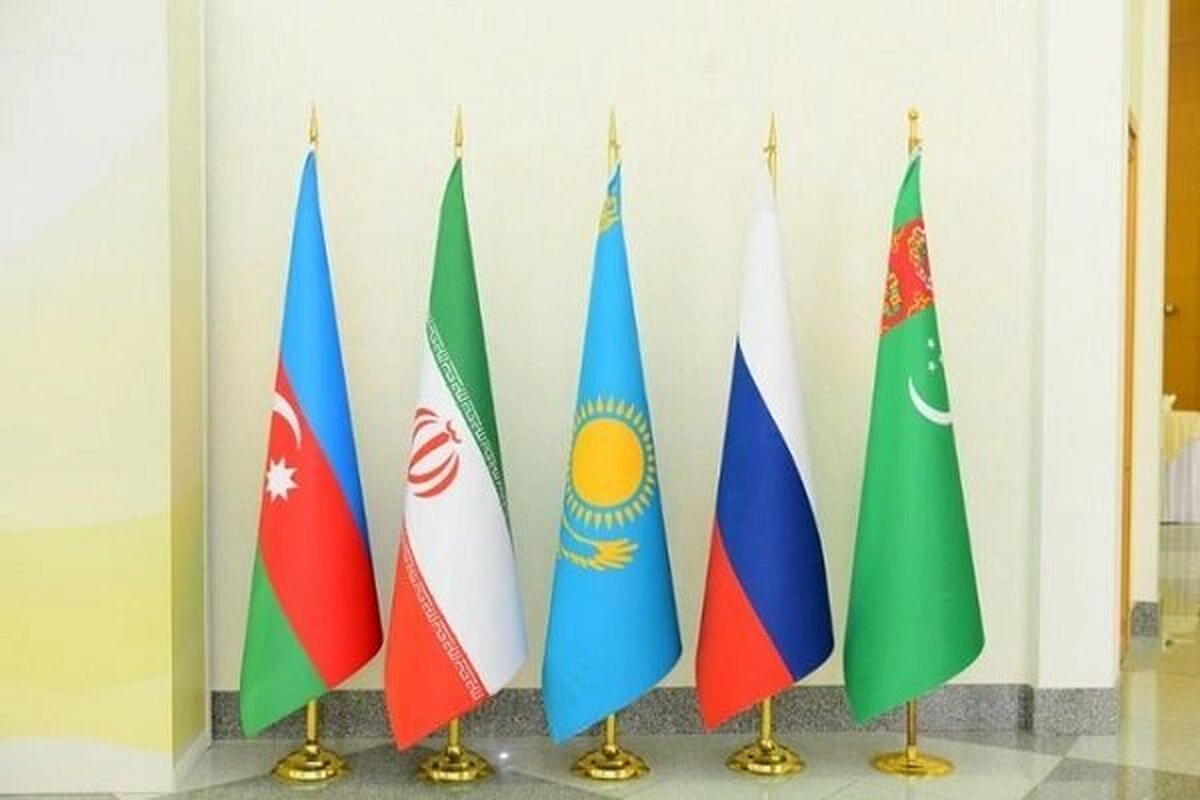
Rise in Throughput of Ports in Iran’s Gateway to Eurasia
EghtesadOnline: Atotal of 1.32 tons of commodities were loaded and unloaded at Gilan Province’s ports during the current Iranian year’s first nine months (March 21-Dec. 21, 2021), registering a 12% rise compared with the similar period of last year, according to director general of the northern province’s Ports and Maritime Organization.
“Anzali Port accounted for 1.14 million tons of the total throughput and Astara Port for more than 180,000 tons. The main commodities handled over the period under review were grains, essential goods, vegetable oil, metals, agricultural products, minerals, construction materials, glass, tiles and ceramics, chemicals, wood and particle boards, paper, cardboard and containers,” Hamid Reza Abaei was also quoted as saying by the news portal of the Ministry of Roads and Urban Development.
The official noted that container loading and unloading at Gilan’s ports stood at 4,746 TEUs over the nine months.
Transit of non-oil product from Astara and Anzali ports increased by 207% and 87% respectively compared with the corresponding period of last year.
Gilan lies along the Caspian Sea, west of the province of Mazandaran, east of the province of Ardabil and north of the provinces of Zanjan and Qazvin. It borders the Republic of Azerbaijan in the north and Russia across the Caspian Sea.
With 17 wharfs and an annual capacity to load and unload 10 million tons of commodities, Anzali Port is Iran’s biggest port along the Caspian Sea shores.
With more than 438,000 hectares of agricultural land, the northern province’s output of agronomical, horticultural, livestock and seafood products stands at 3 million tons per year.
Gilan is one the main producers of rice, tea, hazelnuts, peanuts, olives, silk cocoons, bony fish, kiwis and cottonwood in Iran.
Discount to RORO Vessels
Gilan Province is offering 80% discount on port tariffs, 60% on marine transportation fees and full exemption on storage costs to RORO vessels that dock at in the harbors of this Caspian region, Gilan Ports and Maritime Organization said recently.
It added that these vessels will also be prioritized when it comes to mooring.
Roll-on/roll-off (RORO or ro-ro) ships are cargo ships designed to carry wheeled cargo, such as cars, trucks, semi-trailer trucks, buses, trailers and railroad cars that are driven on and off the ship on their own wheels, or using a platform vehicle, such as a self-propelled modular transporter. This is in contrast to lift-on/lift-off (LoLo) vessels, which use a crane to load and unload cargo.
Refrigerated container carrier vessels will also be prioritized in mooring and receive 25% discount on tariffs, 45% on terminal handling charges, 48% on taxes and 9% on storage fees.
Gateway to Eurasia
According to Abolqasem Yousefinejad, a local customs official, most of Iran’s trade with the Eurasian countries is carried out through Gilan Province.
Iranian exports to the Eurasian Economic Union member states will be exempt from customs tariffs as of September 2022, says the managing director of Iran-EEU Export Consortium Center.
“Our exports need to measure up to the standards of EEU market. To arrive at this goal, we have established offices in Moscow and Yerevan to help with the export of Iranian goods and guide traders on the demands of destination markets,” Amir Abbas Afsharamin was quoted as saying by the Persian daily Ta’adol.
As per an agreement with EEU, said the official, the raw materials of the end products destined for exports to the bloc will be procured meticulously so that Iranian products could compete with rivals in the Eurasian market.
“A lot of our processed foodstuff, including dried nuts, dates, pasta, different types of pastry, chocolates and canned food, have already acquired standards to enter EEU’s five member countries. We also have high potentials in the export of faucet and textile,” he added.
Afsharamin noted that the consortium has rented shelves in chain stores across the bloc as part of its measures to facilitate the export of Iranian products.
“Another field where Iranian businesses are capable of producing high quality products is the furniture and wooden artifacts industry. Yet, there are shortcomings in the production chain of furniture regarding raw materials. To overcome this problem, an export consortium has been founded, which is mainly responsible for providing businesses active in the field with high quality raw materials, including fabric, sponge, particle boards and wood, at prices lower than those in our domestic market. This is the biggest agreement ever made with our furniture industry to procure certain raw materials and complete the production chain,” he said.
The interim free trade agreement between the Eurasian Economic Union and Iran has been extended until 2025, the official representative of the Eurasian Economic Commission, Iya Malkina, told during a press briefing after the Supreme Eurasian Economic Council meeting on Dec. 10, BelTA reported.
"During the summit, the parties signed a protocol to the interim agreement leading to the formation of a free trade zone between the Eurasian Economic Union and Iran," she said.
"The interim agreement has been extended until Oct. 27, 2025, or until the free trade agreement enters into force, whichever comes first."
The EEC official recalled that negotiations on the full-fledged free trade agreement are based on the interim agreement in force between EEU and Iran since October 2019.
In H1 2021, trade with Iran posted high growth, such that exports of EEU member states surged by almost 47% to total $1.35 billion, imports by 34% to $825 million. Trade between EEU countries and Iran increased by 27% over the same period in 2019, exports rose by 27%, imports by almost 70%.
Iran and the Eurasian Economic Union signed a three-year provisional agreement in Astana, Kazakhstan, on May 17, 2018, for the bloc to welcome Iran into EEU. The arrangement, which lowers or abolishes customs duties, is the first step toward implementing free trade between Iran and the five members of the union.




